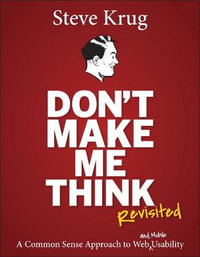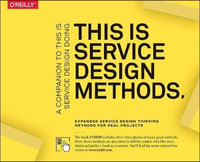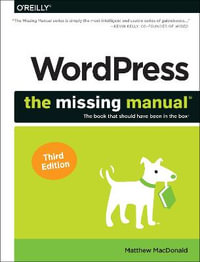| Foreword | p. vii |
| Preface | p. XXI |
| Technology Overview | p. 1 |
| Technologies for Web Applications | p. 3 |
| Introduction | p. 3 |
| HTTP and HTML: The Foundation of Web Technology | p. 4 |
| Accessing Remote Resources: The Hypertext Transfer Protocol | p. 5 |
| Writing Web Documents: The Hypertext Markup Language | p. 8 |
| Client-Side Scripting for Enhancing Page Interactivity | p. 11 |
| Client-Side Components for Enhancing Client Functionality | p. 15 |
| The Evolution of HTML: HTML 4 and Cascading Style Sheets | p. 18 |
| XML: eXtensible Markup Language | p. 21 |
| User-Defined Tags | p. 21 |
| Presenting XML Documents Using XSL | p. 27 |
| SQL: The Structured Query Language for Relational Databases | p. 32 |
| Beyond HTTP: Building Web Pages on the Fly | p. 36 |
| Common Gateway Interface | p. 37 |
| Web Server Extensions | p. 40 |
| Implementing Application State over HTTP | p. 43 |
| Server-Side Scripting | p. 46 |
| Server-Side Executable Tags | p. 48 |
| Increasing Scalability with Application Servers | p. 50 |
| Three-Tier Architectures | p. 54 |
| Multi-Device Content Publishing with XML | p. 55 |
| Summary | p. 57 |
| Bibliographic Notes | p. 57 |
| Models for Designing Web Applications | p. 59 |
| Data Model | p. 61 |
| Introduction | p. 61 |
| Entities | p. 62 |
| Attributes | p. 62 |
| Identification and Primary Key | p. 63 |
| Attribute Types | p. 64 |
| Generalization Hierarchies | p. 66 |
| Relationships | p. 67 |
| N-ary Relationships and Relationships with Attributes | p. 69 |
| Derived Information | p. 71 |
| Running Example | p. 73 |
| Modeling Data Using UML | p. 74 |
| Summary | p. 75 |
| Bibliographic Notes | p. 76 |
| Hypertext Model | p. 77 |
| Introduction | p. 77 |
| Units | p. 79 |
| Data Units | p. 80 |
| Multidata Units | p. 82 |
| Index Units | p. 83 |
| Scroller Units | p. 88 |
| Entry Units | p. 89 |
| Pages | p. 91 |
| Links | p. 92 |
| Specification of Links | p. 92 |
| Link Parameters and Parametric Selectors | p. 94 |
| Automatic and Transport Links | p. 104 |
| Global Parameters | p. 106 |
| Hypertext Organization | p. 110 |
| Site Views | p. 110 |
| Areas, Landmarks, and Home Pages | p. 111 |
| Nested Pages | p. 114 |
| Patterns for Content Publishing | p. 117 |
| Cascaded Index | p. 117 |
| Filtered Index | p. 118 |
| Filtered Scrolled Index | p. 119 |
| Guided Tour | p. 120 |
| Indexed Guided Tour | p. 121 |
| Object Viewpoints | p. 122 |
| Nested Data | p. 123 |
| Hierarchical Index with Alternative Sub-Pages | p. 124 |
| Reusable Units | p. 125 |
| Running Example | p. 127 |
| Representing WebML Hypertexts Using UML | p. 129 |
| Summary | p. 134 |
| Bibliographic Notes | p. 135 |
| Content Management Model | p. 137 |
| Introduction | p. 137 |
| Operations | p. 138 |
| Predefined Operations | p. 139 |
| Object Creation | p. 140 |
| Object Deletion | p. 143 |
| Object Modification | p. 146 |
| Relationship Creation | p. 149 |
| Relationship Deletion | p. 152 |
| Transactions | p. 156 |
| Content Management Patterns | p. 157 |
| Create-Connect Pattern | p. 157 |
| Cascaded Delete | p. 158 |
| Operations for Access Control and for Sending E-mail | p. 160 |
| Login Operation | p. 160 |
| Logout Operation | p. 161 |
| Sendmail Operation | p. 161 |
| Generic Operations | p. 163 |
| Credit Card Charge | p. 163 |
| Running Example | p. 165 |
| Representing WebML Operations Using UML | p. 170 |
| Summary | p. 174 |
| Bibliographic Notes | p. 174 |
| Advanced Hypertext Model | p. 175 |
| Introduction | p. 175 |
| Computation of a Page | p. 176 |
| Examples of Page Computation | p. 181 |
| Preserving Input of Units Across Pages | p. 183 |
| Non-Computable and Nondeterministic Hypertexts | p. 186 |
| Summary | p. 189 |
| Bibliographic Notes | p. 189 |
| Design of Web Applications | p. 191 |
| Overview of the Development Process | p. 193 |
| Introduction | p. 193 |
| Inputs and Outputs | p. 194 |
| Development Roles | p. 195 |
| Development Lifecycle | p. 196 |
| Requirements Specification | p. 197 |
| Data Design | p. 198 |
| Hypertext Design | p. 198 |
| Deployment of the Web Application | p. 199 |
| Bibliographic Notes | p. 201 |
| Requirements Specifications | p. 203 |
| Introduction | p. 203 |
| Requirements Collection | p. 204 |
| Identification of Users | p. 205 |
| Functional Requirements | p. 205 |
| Data Requirements | p. 206 |
| Personalization Requirements | p. 206 |
| Device-Specific Customization Requirements | p. 208 |
| Nonfunctional Requirements | p. 208 |
| Requirements Analysis | p. 210 |
| Group Specification | p. 211 |
| Use Case Specification | p. 212 |
| Data Dictionary Specification | p. 215 |
| Site View Specification | p. 217 |
| Style Guidelines Specification | p. 217 |
| Acceptance Tests Specification | p. 221 |
| The Acer-Euro Running Case | p. 221 |
| Business Requirements | p. 222 |
| User Groups | p. 222 |
| Functional Requirements | p. 226 |
| Data Dictionary | p. 231 |
| Site View Identification | p. 237 |
| Style Guidelines and Page Mock-ups | p. 238 |
| Acceptance Tests | p. 241 |
| Summary | p. 247 |
| Bibliographic Notes | p. 247 |
| Data Design | p. 249 |
| Introduction | p. 249 |
| Characterizing Entities in the Data Schema | p. 252 |
| The Process of Data Design | p. 253 |
| Designing the Core Sub-schema | p. 255 |
| Designing an Interconnection Sub-schema | p. 256 |
| Designing an Access Sub-schema | p. 256 |
| Designing a Personalization Sub-schema | p. 259 |
| Running Example | p. 264 |
| Identification of Core Entities | p. 264 |
| Design of Core Sub-schemas | p. 264 |
| Definition of the Access Sub-schema | p. 266 |
| Definition of Interconnection Sub-schemas | p. 268 |
| Design of Personalization Sub-schema | p. 269 |
| Summary | p. 271 |
| Bibliographic Notes | p. 271 |
| Hypertext Design | p. 273 |
| Introduction | p. 273 |
| Coarse Design | p. 275 |
| Detailed Design | p. 279 |
| Page Specification using Hypertext Sub-schemas | p. 281 |
| Access Hypertext Sub-schema | p. 282 |
| Core Hypertext Sub-schema | p. 285 |
| Interconnection Hypertext Sub-schema | p. 286 |
| Personalization Sub-schema | p. 287 |
| Content Management Hypertext Sub-schema | p. 292 |
| Factoring Out Replicated Units Using OR Sub-pages | p. 293 |
| Running Example | p. 296 |
| External Users Site View | p. 296 |
| Designing Usable Hypertexts | p. 310 |
| Choice of Access and Core Patterns | p. 311 |
| Navigation Aids | p. 314 |
| Orientation Aids | p. 316 |
| Search | p. 317 |
| Consistency | p. 319 |
| Hypertext Modeling for Multi-Device Appilications | p. 321 |
| Summary | p. 323 |
| Bibliographic Notes | p. 324 |
| Implementation of Web Applications | p. 327 |
| Architecture Design | p. 329 |
| Introduction | p. 329 |
| Dimensions of Architecture Design | p. 331 |
| Goals of Architecture Design | p. 331 |
| Constraints of Architecture Design | p. 332 |
| Scenarios of Architecture Deployment | p. 332 |
| Designing the Hardware and Network Architecture | p. 333 |
| Single Server Configuration | p. 333 |
| Separation of the Database Server | p. 336 |
| Exploiting Replication and Parallelism | p. 337 |
| Separation of the Web Server and Scripting Engine | p. 341 |
| Configuration with an Application Server | p. 342 |
| Techniques for Testing and Improving Performance | p. 344 |
| Estimating the Workload | p. 344 |
| Setting Up the Test Environment | p. 345 |
| Verifying Performance | p. 346 |
| Identifying and Removing Bottlenecks | p. 347 |
| Web Caching | p. 351 |
| What to Cache | p. 352 |
| Where to Cache | p. 353 |
| When to Cache and to Refresh the Cache | p. 354 |
| Caching Dynamic Content Using a Server Accelerator and Caching Directives | p. 356 |
| Summary | p. 358 |
| Bibliographic Notes | p. 359 |
| Data Implementation | p. 361 |
| Introduction | p. 361 |
| Standard Mapping | p. 364 |
| Mapping Entities | p. 364 |
| Mapping BLOB Attributes | p. 365 |
| Mapping Relationships | p. 367 |
| Mapping Generalization Hierarchies | p. 371 |
| Mapping Derived Data Using Views | p. 374 |
| Physical Design Tips | p. 377 |
| Running Example | p. 378 |
| Data Management Issues and Architecture | p. 380 |
| Schema Integration | p. 381 |
| Data Integration | p. 383 |
| Implementation of the Replicated Database Architecture | p. 383 |
| Implementation of Online Database Architectures | p. 388 |
| Summary | p. 392 |
| Bibliographic Notes | p. 392 |
| Hypertext Implementation | p. 395 |
| Introduction | p. 395 |
| Overview of the Page Computation Steps | p. 396 |
| Implementing Pages, Content Units, and Links | p. 400 |
| Standalone Pages | p. 400 |
| Inter-page Links | p. 404 |
| Intra-page Links | p. 411 |
| Entry Units | p. 416 |
| Multi-Choice Index Unit Linked to a Multidata Unit | p. 419 |
| Areas, Landmark Pages, and Nested Sub-pages | p. 424 |
| Implementing Operations | p. 427 |
| General Schema of Operation Implementation | p. 428 |
| Deletion of an Object Chosen from an Index | p. 431 |
| Entry Unit Linked to a Create Unit | p. 432 |
| Create and Connect Pattern | p. 439 |
| Login, Logout, and Global Parameters for the Current User and Group | p. 444 |
| Implementing Set and Get Units and Complex Pages | p. 446 |
| Summary | p. 453 |
| Bibliographic Notes | p. 454 |
| Advanced Hypertext Implementation | p. 457 |
| Introduction | p. 457 |
| Improving the Software Architecture | p. 458 |
| Model-View-Controller Architecture | p. 461 |
| Model-View-Controller Architecture Applied to Web Applications | p. 463 |
| Mapping WebML to the MVC Architecture | p. 466 |
| Mapping WebML Pages to the MVC Architecture | p. 466 |
| Mapping Content Units to the MVC Architecture | p. 471 |
| Mapping Entry Units to the MVC Architecture | p. 473 |
| Mapping Operations to the MVC Architecture | p. 475 |
| Managing Very Large Applications | p. 479 |
| Using Enterprise JavaBeans to Implement the Business Logic | p. 481 |
| Wrapping Persistent Data with Entity Beans | p. 485 |
| Implementing Page Services and Content Unit Services as Enterprise Java Beans | p. 489 |
| Implementing Operation Units as Enterprise Java Beans | p. 490 |
| Using CSS and XSL to Manage Presentation | p. 491 |
| Summary | p. 496 |
| Bibliographic Notes | p. 496 |
| Tools for Model-Based Development of Web Applications | p. 499 |
| Introduction | p. 499 |
| Data and Hypertext Design | p. 502 |
| Data Mapping | p. 504 |
| Presentation Design | p. 506 |
| Code Generation | p. 508 |
| Other Features | p. 509 |
| Correctness Checking | p. 509 |
| Cooperative Work | p. 510 |
| Automatic Documentation | p. 511 |
| WebML Extensibility with Custom Units | p. 511 |
| Summary | p. 515 |
| Bibliographic Notes | p. 515 |
| Summary of WebML Elements | p. 519 |
| WebML Syntax | p. 525 |
| OCL Syntax | p. 533 |
| Summary of WebML Elements Implementation | p. 537 |
| References | p. 543 |
| Index | p. 551 |
| Table of Contents provided by Rittenhouse. All Rights Reserved. |
























